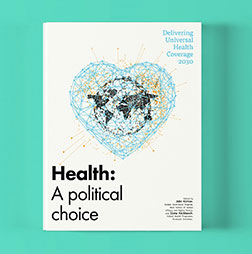The strategic role of ministerial meetings in fulfilling G7 commitments
The 2025 G7 summit, set to take place in Kananaskis, Alberta, in June, arrives at a time of increasing geopolitical uncertainty among its members. Tensions between the United States and its G7 counterparts, compounded by Canada’s electoral uncertainty in the months leading up to Kananaskis, raise concerns about the effectiveness of the summit in fostering meaningful progress on global economic and policy commitments. Given these challenges, the strategic use of ministerial meetings – gatherings of relevant ministers from G7 members – represents a crucial mechanism for enhancing compliance with the commitments outlined in the leaders’ communiqué and outcome documents.
A key measure of the Kananaskis Summit’s success will be the extent to which G7 members fulfil the commitments agreed upon there. Predicting compliance has helped policymakers identify areas needing additional focus, allowing governments to allocate resources effectively. However, the shifting political landscape, including trade hostilities and policy divergences, makes such forecasting more difficult than in previous years. Notably, the return of Donald Trump as US president signals a likely deprioritisation of the G7 as a vehicle for international economic coordination, mirroring his approach during his first term. Furthermore, with Canada’s leadership uncertain until six weeks before the leaders’ meeting, the dynamics of the summit remain fluid.
The power of pre-summit ministerial engagement
Despite these complications, evidence underscores the importance of ministerial meetings in enhancing G7 compliance with summit commitments. Research indicates that when ministerial meetings are held before a G7 summit, the probability of compliance with related subject commitments increases by 26%. In contrast, post-summit ministerial meetings do not exhibit any statistically significant effect on compliance rates. This suggests that early engagement at the ministerial level is essential in laying the groundwork for successful follow-through on commitments.
By facilitating extensive pre-summit finance and foreign ministers’ engagements, Canada, as the host, had an opportunity to mitigate diplomatic friction and enhance cooperation among G7 members. These meetings could function as a channel for building consensus and reduce the likelihood of direct confrontation at the leader level. This approach is particularly relevant in the current geopolitical climate, where direct engagement with the US administration on contentious economic issues may yield limited progress. Instead, a strategy centred on fostering ministerial collaboration can help maintain diplomatic cohesion without directly challenging US leadership.
Beyond mitigating tensions, ministerial meetings offer a practical advantage in ensuring that commitments translate into actionable policies. By engaging in pre-summit discussions, ministers can identify potential implementation hurdles, develop coordination mechanisms and align domestic policies with international commitments. This preparatory work strengthens the foundations for compliance, ensuring that summit declarations are not merely rhetorical but are accompanied by concrete policy initiatives.
A targeted approach
In particular, the role of ministerial meetings is critical in addressing issues where compliance may be at risk. If predictions suggest lower performance on health-related commitments, for example, targeted pre-summit ministerial meetings on global health initiatives could serve as a mechanism for ensuring greater alignment among members. By fostering early consensus, these meetings increase the likelihood that health-related initiatives receive the necessary resources and political commitment to be effectively implemented.
The 2025 Kananaskis Summit presents a unique test for the G7’s ability to navigate internal divisions while maintaining a unified approach to global challenges. Ministerial meetings represent a proven strategy for bolstering compliance with summit commitments. However, because of the unusual situation of a transitional government and election campaign in the months before the summit, Canada’s G7 presidency has chosen to hold only foreign and finance ministerial meetings before the summit. More ministerial meetings will be held after the summit, providing an exceptional year for assessing the impact of the timing of such meetings on compliance. By leveraging these engagements strategically, the G7 presidencies of Canada in 2025 and France in 2026 can enhance the effectiveness of the summit, ensuring that the commitments outlined in the leaders’ communiqué translate into meaningful international action.












